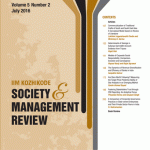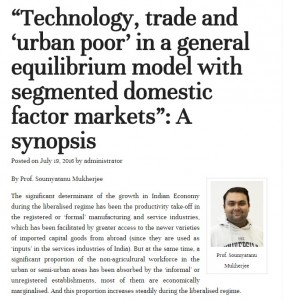Coalition Loyalty Programs: The way forward?
With product/service differentiation becoming the norm to acquire and maintain more customers has pushed the case of Loyalty Programs into the strategic plan of any company that matters in the industry. The technological boom along with customizable CRM (Customer Relationship Management) systems have further given impetus to adoption of loyalty programs. But not all companies are getting into the bandwagon of launching their own Loyalty programs. Very few are abstaining but most are getting into the new format of loyalty programs which is growing in popularity by the day – Coalition loyalty programs. From a global research done by Finaccord we know that more than 2 billion people are enrolled in coalition loyalty programs, to put that in perspective its nearly 30% of the world’s population is in one coalition Loyalty program or the other. And closer home what’s interesting is that it is a coalition program in India, Max Get More programme, which has the largest number of members with 397 million members. This has certainly piqued the interest of academics and practitioners alike.
The different kinds of loyalty programs based on their characteristics are shown in figure 1:
So why this sudden interest and rise in popularity of coalition loyalty programs?
The main driving force behind the growth of the coalition loyalty programs have been the failure of most of the Loyalty programs in achieving their objectives and also there is the question on their viability (Standalone Loyalty programs justifying its investment). Some of the research findings from academic circles also throw light on the ineffectiveness of Standalone Loyalty programs (SLP):
- only 24 percent of its respondents were more likely to shop at stores that had loyalty programs (Maritz Loyalty Marketing Poll – Clark, 2003)
- 76 percent of respondents stated that their shopping behavior had not changed since owning a loyalty card (European Study – Wright & Sparks, 1999).
- four out of 10 loyalty program participants quit at least one program (Maritz Poll – Friedman, 2003)
- only 20 to 25 percent of enrolled members earning or redeeming loyalty program credits in the past 12 months (Capizzi & Ferguson, 2005)
And these are only a few examples which clearly indicate in the direction that SLP’s are taking. From a consumer perspective, with the rising number of loyalty programs, people do seem to lose track of where all they have membership. Add to this the difficulty in redeeming rewards and we have a system confounds the customers even more and they don’t bother taking the trouble.
From a Company perspective it doesn’t make sense to invest in a program which doesn’t give them a revenue which is greater than the costs incurred through establishing and running it and most often than not the economic returns are not justified
Dawn of the Coalition Loyalty Program era
Also known as Multi-vendor Loyalty Programs and Partnership loyalty programs there are two major types of Coalition Loyalty programs as depicted in Figure 1:
- Primary firm manages the Loyalty program with other partners becoming a part of it.(eg: Hilton Honors)
- Coalition of companies coming together to form a Loyalty Program Managed by an external agency(eg: Payback, Max Get More)
It is the latter which has grown in popularity because it attacks and successfully addresses the two major problems of the SLP’s:
- It provides ease of use to consumers by helping them use one membership across stores and products.
- It helps companies by eliminating the huge initial investment and reduces the running cost also to a large extent thereby making it a very attractive value proposition
There are also other benefits like synergy and spillover effects by which goodwill of one partner transfers to the others or when a bad service experience with one of the partners might just be overlooked due to the overall delight with the program.
The growing popularity shift in worldview towards coalition programs can be evidenced by their growing numbers in the developed and developing nations. Some of the major coalition Loyalty programs are Nectar (UK), Air Miles (various countries), Bonus Link (Malaysia), Gold Points (USA), PayBack (Germany, Italy, Poland, India and Mexico), Infinity (South Africa), OK Cashbag (South Korea) and K-Plussa (Finland). Just recently (May 2015), American express launched first US based Coalition loyalty program Plenti which includes American Express, AT&T, ExxonMobil, Macy’s, Nationwide, Rite Aid, Direct Energy, Enterprise Rent-A-Car and Hulu as partners.
Looking Forward
So from the Literature Review undertaken and by observing the trends happening in the Loyalty programs space we can certainly conclude that coalition programs are here to stay and it will be the future of Loyalty program business. In countries like Finland and South Korea the penetration levels of Coalition programs among adults have already exceeded 85 %. . Areas like how such programs impact brand equity or the spillover effects across industries, share of cost bias, conditions for adoption and so on a lot more are areas which are ripe for undertaking research in this area. The potential in developing countries is still immense for such a format and over the coming years we are certain to see a lot of interest and growth in Coalition Loyalty programs both in practice in the industry as well as in research among the Academic Circles.
The author is an FPM student at IIM Kozhikode. Views expressed here are his personal views.

















 Users Today : 212
Users Today : 212 Users Yesterday : 602
Users Yesterday : 602 This Month : 9778
This Month : 9778 This Year : 9778
This Year : 9778 Total Users : 568022
Total Users : 568022 Who's Online : 5
Who's Online : 5
An interesting viewpoint on the subject of consumer loyalty that sparks several questions.
Is loyalty a virtue, and loyalty program a silver bullet? What considerations apply when a firm contemplates a loyalty program? How does the pace of product/service innovation or its perishability influence the program structure decisions? As the article reports, the consumers are getting lukewarm towards single vendor programs. Could this be because of the marginalization of the product or service in consumers’ need profiles? Or could it be because of a gradual de-branding of the products? Most loyalty programs are associated with firms. But firms generally offer multiple brands and consumers may have stronger cognitive connections to brands rather than the firms. Is the loyalty then to the firm or to the brand? What would be the relevance of a loyalty program when brands are acquired through a slew of M&A activities? Are coalition loyalty programs multi-vendor devices or multi-brand devices? How does the issue of brand adjacency inform on the relevance of such programs?
Loyalty programs are expensive to launch and sustain. Apart from operating costs, there are costs of constant communication, brand refresh, product innovation, and redesign in customer-facing parts of organization, processes and governance. A key element of such programs is the opportunity to constantly learn about the changing consumer preferences and behaviors (ref interview of Colin Marshall, then Chairman of British Airways in HBR Nov-Dec 1995 issue). This requires massive investments in IT – whether in implementing social media front-ends, or building data warehouses & analytics. If a firm thinks only about the operating and communications costs, a ‘me-too’ imitation would be positively dangerous. Such a firm would remain unaware of the remaining costs, and could easily end up underinvesting in such programs. In that case, it would see no benefit from loyalty programs, apart from losing money, focus, and time. Would it then be tempted to join a coalition loyalty program?
Are coalition loyalty programs like picking up a handful of pebbles and throwing them at a target in the hope of one hitting a bull’s eye?